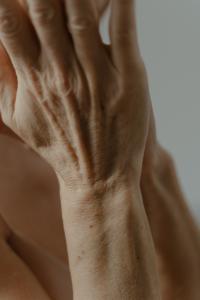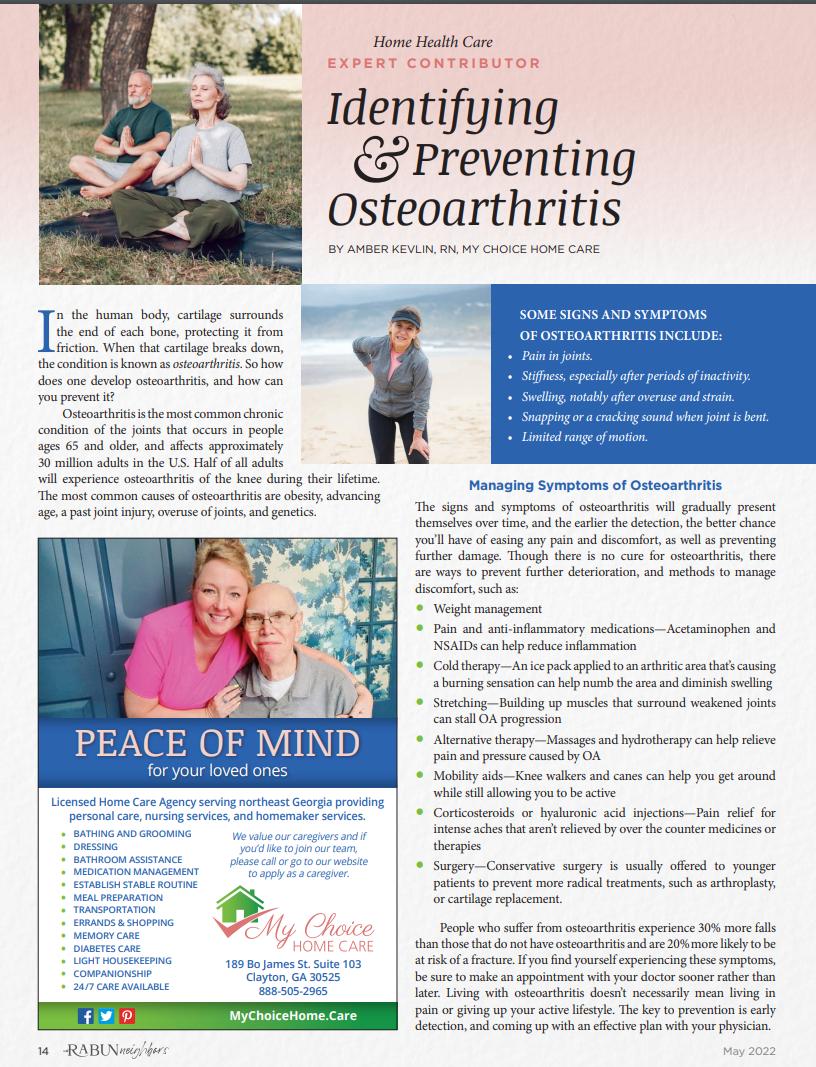In the human body, cartilage surrounds the end of each bone, protecting it from friction. When that cartilage breaks down, the condition is known as osteoarthritis. So how does one develop osteoarthritis, and how can you prevent it?
Osteoarthritis is the most common chronic condition of the joints that mostly occurs in people ages 65 and older, and affects approximately 30 million adults in the U.S. Half of all adults will experience osteoarthritis of the knee during their lifetime. The most common causes of osteoarthritis are obesity, advancing age, a past joint injury, overuse of joints, and genes.
Some signs and symptoms of osteoarthritis include:
- Pain in joints
- Stiffness, especially after periods of inactivity
- Swelling, notably after overuse and strain
- Snapping or a cracking sound when joint is bent
- Limited range of motion
Managing Symptoms of Osteoarthritis
The signs and symptoms of osteoarthritis will gradually present themselves over time, and the earlier the detection, the better chance you’ll have at easing any pain and discomfort, as well as preventing further damage. Though there is no cure for osteoarthritis, there are ways to prevent further deterioration, and methods to manage discomfort, such as:
- Weight management
- alleviate all senior arthritis pains and symptoms
- Pain and anti-inflammatory medications – Acetaminophen and NSAIDs can help reduce inflammation
- Cold therapy – An ice pack applied to an arthritic area that’s causing a burning sensation can help numb the area and diminish swelling
- Stretching – Building up muscles that surround weakened joints can stall OA progression
- Alternative therapy – Massages and hydrotherapy can help relieve pain and pressure caused by OA
- Mobility aids – Senior knee braces, sleeves, walkers and canes can help you get around while still allowing you to be active
- Corticosteroids or hyaluronic acid injections – Pain relief for intense aches that aren’t relieved by over the counter medicines or therapies
- Surgery – Conservative surgery is usually offered to younger patients to prevent more radical treatments, such as arthroplasty, or cartilage replacement.
People that suffer from osteoarthritis experience 30 percent more falls than those that do not have osteoarthritis and are 20 percent more likely to be at risk of a fracture. If you find yourself experiencing these symptoms, be sure to make an appointment with your doctor sooner rather than later. Living with osteoarthritis doesn’t necessarily mean living in pain or giving up your active lifestyle. The key to prevention is early detection, and coming up with an effective plan with your physician.
________________________________________________________________________________________
Our article is published in RABUN Neighbors magazine


Recent Comments